How to tell the taste of coffee? coffee nose to help you.
For any coffee roaster, a set of coffee nose is a necessary training tool. For a long time, due to different regions, we are very strange to many aromas mentioned in coffee, such as cedar, blackcurrant and so on. After the launch of Le Nez du vin, the wine tasting tool of French Jean Lenoir, it meets the needs of coffee lovers and professionals. After that, it launched this Le Nez du Caf é coffee nose, which is specially used to train coffee aroma. It has been favored by coffee lovers and professionals all over the world, and the English version in the United States has been out of stock and replenished for as long as a year. The limited edition box is different from the ordinary edition, the limited edition is made of top oak, the design of the box won the international design award in 1997, is very precious, and has a unique global identification number. Fragrance samples can be preserved for up to 20 years from the first use!
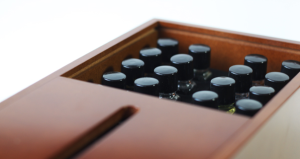
The original 36-fragrant coffee nose is a brand-new device praised by coffee professionals, coffee enthusiasts and coffee fans. It is a "super weapon" to learn coffee tasting, improve understanding of coffee, and then achieve greater achievements and more fun in the field of coffee. Youdao is "if you want to do good work, you must sharpen it first". It is hoped that it can provide coffee lovers, baristas, coffee trainers, coffee cup testers and roasters with another weapon to explore the mysteries of the coffee world.
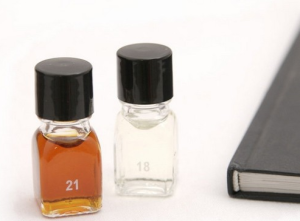
The complete set of coffee nose has a total of 36 aromas, which belong to 10 categories, such as Earthy, Vegetable, Dry Vegetal, Woody, Spicy, Floral, Fruity, Animal, Toasty, Chemical and so on. Each aroma is classic and pure, comes from the nature of our lives, is picked from you and me, but seems to be extracted from the soul of coffee. Remember each aroma, understand the knowledge and background information behind the aroma, and make a qualitative leap in our coffee appreciation, analysis and understanding.
Coffee nose is not esoteric and obscure to learn and use. it is not only suitable for coffee professionals such as baristas, coffee trainers, coffee cup testers and coffee roasters, but also suitable for coffee lovers and gamers. We can be in a very relaxed state. Step by step every day, while playing while appreciating, while memorizing, it is even more fun for two or three friends to compete together, just for a week or two. The soul of coffee is in your heart forever.
Coffee nose awakens a new field of knowledge, and it is a bright and wonderful work in the coffee world. At present, it is a highly respected coffee learning pet of authoritative organizations such as the American Fine Coffee Association (SCAA) and the European Fine Coffee Association (SCAE), and its sales are amazing in North America. In addition, the coffee nose in an exquisite wooden box is also a masterpiece of art, which is placed on the desk in the window and occasionally taken out to play with.
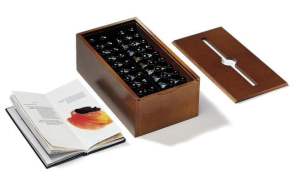
36 flavors of coffee nose!
1.earth (soil)
2.potato (potato)
3.garden peas (pea)
4.cucumber (cucumber)
5.straw (straw)
6.cedar (cedar)
7.clove-like (clove)
8.pepper (Pepper)
9.coriander seeds (coriander seed)
10.vanilla (vanilla)
11.tea-rose/redcurrant jelly (red currant fruit)
12.coffee blossom (coffee blossom)
13.coffee pulp (coffee pulp)
14.blackcurrant-like (blackcurrant)
15.lemon (lemon)
16.apricot (apricot)
17.apple (Apple)
18.butter (cream)
19.honeyed (honey)
20.leather (leather)
21.basmati rice (Indian fragrant rice)
22.toast (toast)
23.malt (malt)
24.mapple syrup (Maple syrup)
25.caramel (caramel)
26.dark chocolate (dark chocolate)
27.roasted almonds (roasted almonds)
28.roasted peanuts (roasted peanut)
29.roasted hazelnuts (roasted hazelnut)
30.walnuts (walnut)
31.cooked beef (cooked beef)
32.smoke (smoke)
33.pipe tobacco (pipe tobacco)
34.roasted coffee (roasted coffee)
35.medicinal (taste of medicine)
36.rubber (rubber)
Important Notice :
前街咖啡 FrontStreet Coffee has moved to new addredd:
FrontStreet Coffee Address: 315,Donghua East Road,GuangZhou
Tel:020 38364473
- Prev
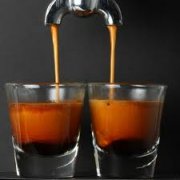
General knowledge of boutique coffee baking and making espresso
Today we are going to study a coffee roasting training course to compare the differences between espresso and other immersion brewing methods (such as French pressing and trickling). Recently, I have just received a sample bean, and I can't wait to bring the ceramic cup testing pot I have just got. After I injected hot water into the prepared sample bean for about five minutes, the bean showed lively.
- Next
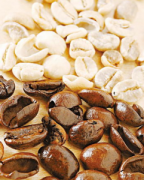
Coffee beans common sense coffee roasting defective beans introduction
Mildewed beans: because the drying is not complete, or in the transportation, storage process damp, and grow cyan, white mold, sometimes make beans stick together, if not remove these moldy beans, will produce mildew smell. Dead beans: beans that bear abnormal fruit. The color is not easily changed by baking, so it is easy to distinguish. The flavor is thin and harmful as silver skin, which will become peculiar smell.
Related
- Beginners will see the "Coffee pull flower" guide!
- What is the difference between ice blog purified milk and ordinary milk coffee?
- Why is the Philippines the largest producer of crops in Liberia?
- For coffee extraction, should the fine powder be retained?
- How does extracted espresso fill pressed powder? How much strength does it take to press the powder?
- How to make jasmine cold extract coffee? Is the jasmine + latte good?
- Will this little toy really make the coffee taste better? How does Lily Drip affect coffee extraction?
- Will the action of slapping the filter cup also affect coffee extraction?
- What's the difference between powder-to-water ratio and powder-to-liquid ratio?
- What is the Ethiopian local species? What does it have to do with Heirloom native species?

